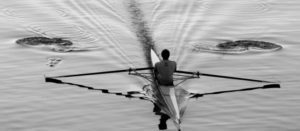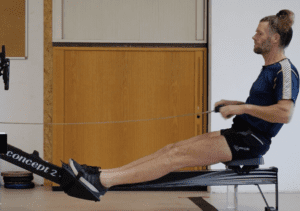So the Olympic course at Dorney has had its trial run and the organisers don’t think that the Olympic competitors will suffer unduly from its cross-winds.
Unduly?
They must already have had some qualms: time trials were used at this year’s World Cup I in Munich, another course where you might suffer from cross-winds (you can even gain unduly if you’re in the lanes closest to the grandstands and in the lea of the wind). There they used the time trials to determine the lane draw for the heats.
How does a time trial work?
Crews are started at intervals and timed over the course. In Munich they used 30 second intervals which presumably gives enough time for the boat wash to dissipate before the next crew follows it down the course; I’ve seen other time trials with shorter intervals but using, say only lanes 1 and 3 and the distance between them to mitigate the interference. It would depend on how much of the course was affected by the wind.
How do you know who’s winning?
Good point. If it’s you watching then all you’ve seen is a procession of boats; you might be guessing that one gained on the one ahead of it but how do you know that there was always 30 seconds between starting times? It is a cross-wind after all and notoriously difficult to line boats up.
If it’s you racing, well, 30 seconds is a long time. Too far to hear the crew in front and because we’re trying to be fair, not even a bumpy wake to let you know that you’re getting close; too far to accurately gauge how close the crew behind is getting – you just have to do what the coach is always telling you: focus on your own race.
And who’s won?
The crew with the fastest time wins so it’s that big results screen that will dominate your day at the racing.
Has this been done before?
Oh yes, but usually only in the first stages of a regatta. Quite often in a 2-day regatta a time-trial is used to seed the heats in events with large entries and a more ruthless qualification system applied to the rest of the racing. You race your time trial and are sorted into heats according to your times so that all the fastest crews are evenly spread. But then, there’s no repecharge and sometimes no quarter- or semi-final. And so is this fair?
As a coach, if I have to do seat-racing on an unfair course (corners, current, wind) then I’ll use time trials to sort my crews – it is definitely fairer and gives me clear results.
So what’s the problem?
Well, it’s fair but is it any fun? Not for the spectators certainly: where are the close finishes, the dicing for position, the response to challenges, the changing fortunes? And for the rowers: could a time trial produce a finishing burst like that of the NZL men’s 2- last year?







